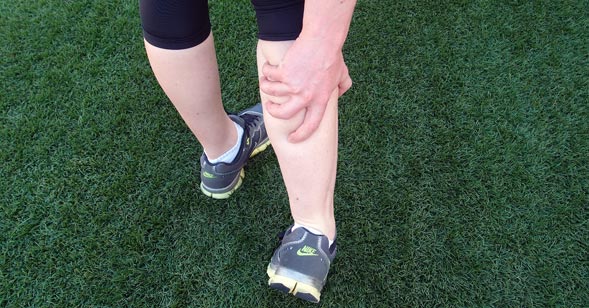
Dealing With Exercise Muscle Cramps And Stitches
I’ve had many clients ask me over the years what causes muscle cramps and side abdominal stitches. Below is a short article explaining what they are, why you might get them, and how to avoid them.
What are muscle cramps?
Muscle cramps are a sudden, tight and intense pain that occurs when a muscle becomes forcibly and uncontrollably shortened and locked into a painful spasm. They most commonly occur in the muscle groups directly involved in the exercise being performed, such as the calf muscle whist running. Muscle cramps can affect any skeletal muscle, but the most common sites in the body are in the legs – calf (lower leg), hamstring (rear thigh), quadriceps (front thigh). Cramps can range from being a slight twinge to excruciating pain and can last from a few seconds to minutes. In severe cases, an episode of muscle cramping can even lead to post-cramping muscle soreness, similar to delayed onset muscle soreness.
What are stitches?
A stitch is a localised pain, usually felt on the side just below the ribs. It can aslo be accompanied by a stabbing sensation in the shoulder joint. Depending on the severity some people can exercise through the pain, where others need to slow down, or stop all together. Stitches can disappear a few minutes after exercise, but if the stitch was quite severe, residual pain can last for a few days. You are more likely to experience a stitch in activities that involve vigorous, upright and repetitive movement of the torso such as running.
What causes cramps and stitches?
The short answer, is that we don’t really know. Despite both being quite common, the exact cause of cramps and stitches is unknown. Cramps are more likely to occur in tired muscles and muscles that are already in a shortened position. This means exercising when you have a low level of fitness or exercising at a high intensity can increase the likelihood of getting a cramp, as may poor stretching habits (after exercise).
When it comes to stitches, it seems eating too closely to exercise or consuming certain foods (high fat and high fibre foods) are more likely to cause problems.
How can I avoid them?
For cramps, make sure you give your muscles enough time to recover after a hard training session. You should also be cautious when changing speed or intensity, especially when muscles may be fatigued. Even though there is little evidence to support dehydration as being associated with exercise muscle cramps, it’s still important to maintain adequate hydration when exercising.
The likelihood of a stitch occurring may be reduced by not exercising until 2-4 hours after a large meal, and avoiding high fat and high fibre foods pre-exercising. Immediately before and during exercise, people should avoid drinks such as as soft drinks, cordial and fruit juice, as they seem to increase the risk of stitches. It’s also preferable to consume small amounts of fluid regularly, then to drink a large volume at one time.
I hope this helps!
